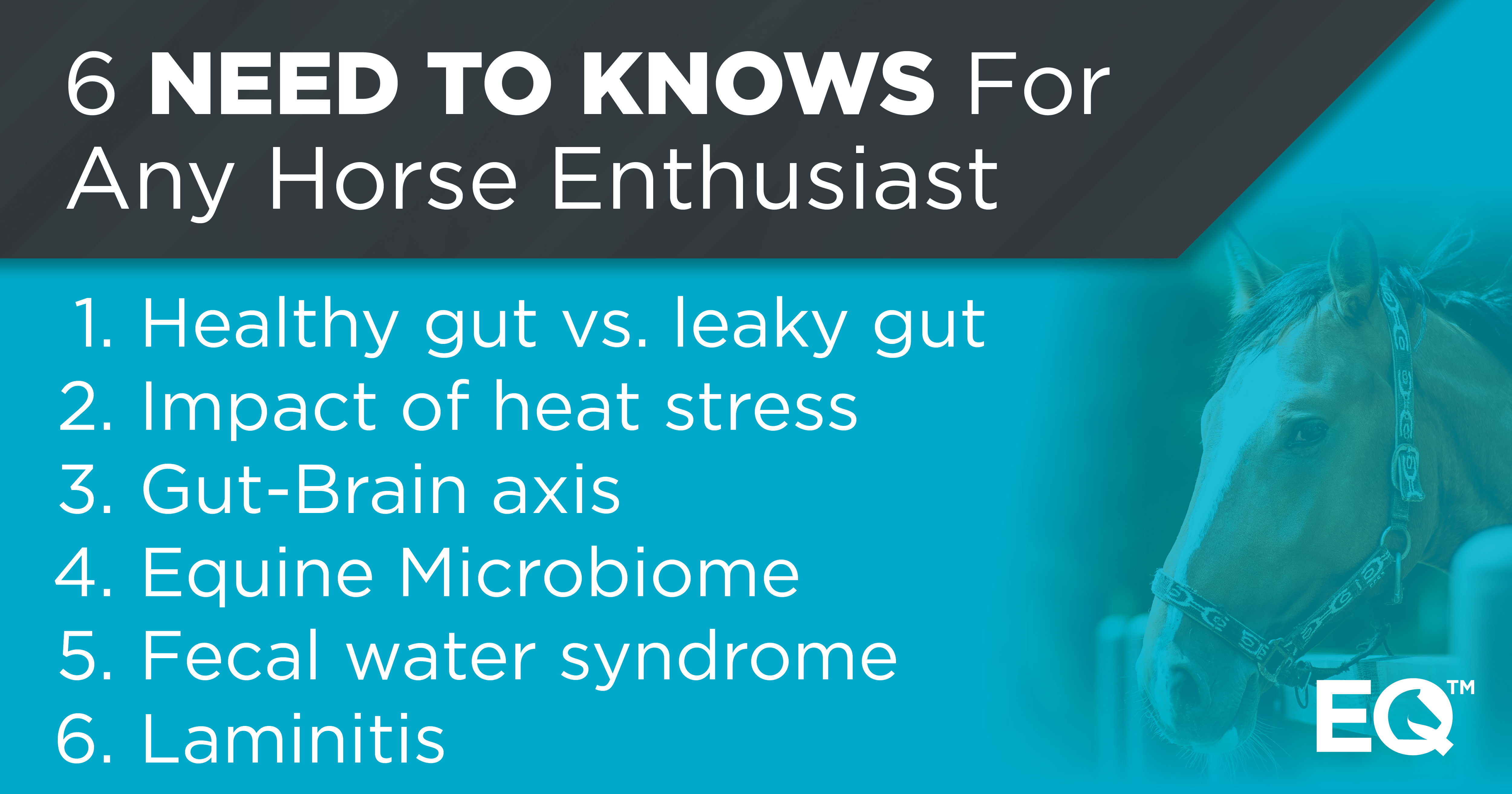4. The Equine Microbiome: Exploring the “Second Brain” of the Horse
In this presentation from Dr. Jyme Nichols, Equine Nutritionist at Bluebonnet Feeds and Host of the Feed Room Chemist podcast dives into the “second brain” of the horse. Dr. Nichols shares her expertise in the equine microbiome by likening it to a thriving ecosystem. Throughout the presentation, you will learn about the “good” and the “bad” bugs in the equine microbiome, as well as the numerous factors impacting microbial balance. Dr. Nichols also offers some methods and practical management practices to maintain a healthy microbiome.
Catch the presentation to learn more about:
- What is the microbiome
- What lives in the microbiome – the “good” and “bad” bugs
- Prebiotics, probiotics, postbiotics, and more
- How to positively influence the microbiome
5. Dietary Fiber, Gastrointestinal Water Movement and Fecal Water Syndrome
Associate Professor of Equine Science at Penn State University, Dr. Burt Staniar, familiarizes participants with Fecal Water Syndrome and the theories surrounding this equine health concern during this session. The presentation focuses on some details regarding water movement into, out of and around the equine gastrointestinal tract. Dr. Staniar also discusses important details regarding dietary fiber that may help horse owners address concerns regarding excessive fecal water.
Join this presentation to learn about the following:
- Water in the equine digestive system
- Sources of water utilization and loss in equine
- How diet can have an impact on water movement
- Tips and tricks to avoid Fecal Water Syndrome and other water-related illness
6. Feeding the Laminitic Horse: The Importance of a Forage-First Diet
In this session, Dr. Stephen Duren, founder of Performance Horse Nutrition, dives deep into the science behind one of the most prevalent equine issues in the industry: laminitis. Participants watching this presentation learn how to define hoof anatomy and show exactly where and how laminitis impacts their horse. Dr. Duren also explains how to identify laminitis by looking for some common symptoms and behaviors followed by an overview of potential causes and triggers. This presentation also provides viewers some helpful tips about feeding programs based on the unique causes of laminitis.
Tap into this presentation to cover these key points:
- The anatomy and physiology of laminitis
- Symptoms and potential causes of laminitis
- Feeding tips and tricks to manage laminitis
Don’t miss this chance to equip yourself with knowledge to boost your horse’s health and well-being. Register and gain access here: attendequisummit.com.

